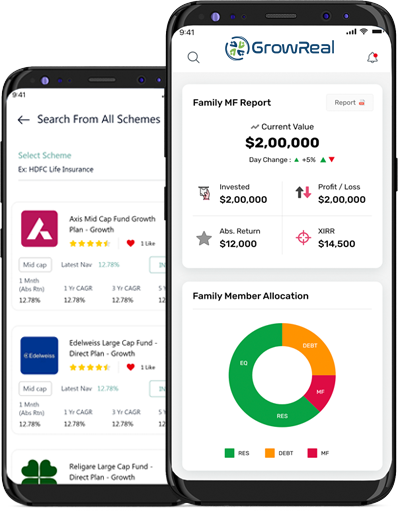What Are Mutual Funds? and the Various Mutual Fund Types
Common assets are a kind of ensured oversaw consolidated venture plots that accumulates cash from numerous financial backers to purchase protections. There is no such exact meaning of shared reserves, but the term is generally regularly utilized for aggregate venture conspires that are directed and accessible to the overall population and unassuming in nature. Flexible investments are not considered as a shared assets.
Common assets are recognized by their foremost ventures. They are the fourth biggest classification of assets that are otherwise called currency market assets, security or fixed pay assets, stock or value assets and crossover reserves. Reserves are likewise sorted as file based or effectively made due.
In a shared asset, financial backers pay the asset's consumption. There is some component of uncertainty in these costs. A solitary common asset might provide financial backers with a decision of different blends of these costs by offering different various kinds of offer mixes.
The asset chief is otherwise called the asset support or asset the executives organization. The trading of the asset's interests as per the asset's speculation is the goal. An asset chief must be an enrolled speculation consultant. A similar asset chief deals with the assets and has a similar brand name which is otherwise called a 'reserve family' or 'asset complex'.
However long shared conform to prerequisites that are laid out in the inward income code, they won't be burdened on their pay. Obviously, they should extend their ventures, limit the responsibility for protections, scatter the greater part of their pay to their financial backers every year and acquire a large portion of their pay by putting resources into protections and monetary standards.
Common assets can pass available pay to their financial backers consistently. The sort of pay that they acquire stays unaltered as it gets moved to the investors. For e.g., common asset merchants of profit pay are portrayed as profit pay by the financial backer. There is an exemption: overall deficits that are caused by a common asset are not circulated or gone through store financial backers.
Common assets put resources into different sorts of protections. The different sorts of protections that a specific asset might put resources into are referenced in the asset's plan, which make sense of the asset's speculation's goal, its methodology and the allowed ventures. The goal of the venture portrays the sort of pay that the asset is searching for. For e.g., a "capital appreciation" reserve by and large hopes to procure the majority of its profits from the expansion in costs of the protections it holds as opposed to from a profit or the interest pay. The methodology of the speculation portrays the rules that the asset administrator might have used to choose the ventures for the asset.
The speculation arrangement of a common asset's venture is consistently checked by the asset's portfolio supervisor or directors who are either utilized by the assets chief or the support.
Benefits of Shared reserves are:
1) Expansion in enhancement.
2) Liquidity consistently.
3) Proficient venture the board.
4) Ability to take part in speculations that might be accessible just for bigger financial backers.
5) Comfort as well as administration.
6) Government oversight.
7) More straightforward correlation
like its benefits, the Common assets have burdens as well. Here are some of them:
1) High charges.
2) Less command over timing of acknowledgment of gains.
3) A lot lesser unsurprising pay.
4) No chance for customization.
There are various kinds of Common assets also. Here are some of them.
Open-end reserves
In open-end common assets, one should repurchase their portions from financial backers toward the finish of each and every work day at the net resource esteem that is determined for that day. A large portion of the open-end reserves likewise offer offers to people in general on each work day. These offers are likewise evaluated at a specific net resource esteem. An expert speculation supervisor will regulate the portfolio, while trading protections whichever is fitting. The complete interest in the assets will be fluidly in light of offer purchasing, share recoveries and change in the market variety. There are likewise no legitimate cutoff points on the quantity of offers that can be given.
Close-end reserves
Close-end reserves for the most part issue offers to the public only a single time, when they are made by means of a first sale of stock. These offers are then recorded for exchanging on a stock trade. Financial backers, who wish no longer to put resources into the assets, can't sell their portions back to the assets. All things considered, they should offer their portions to one more financial backer in the market as the value they might get might be gigantically not quite the same as its net resource esteem. It could be at a higher cost than normal to net resource esteem (higher than the net resource worth) or all the more usually at a lesser to net resource esteem (lower than the net resource esteem). An expert venture director will supervise the portfolio, in trading protections whichever is proper.
Unit Venture Trusts
UIT or Unit Venture Trusts issue offers to the public just once when they are made. The financial backers thusly can take advantage of the offers straightforwardly with the asset or they may likewise sell their portions on the lookout. UIT's have no expert venture directors. Their arrangement of protections is laid out by the production of the UIT's and goes through no changes. UIT's overall have a restricted life expectancy, which is restricted at their creation.

Comments
Post a Comment